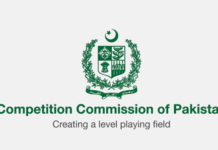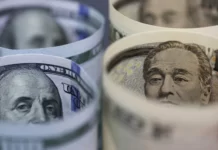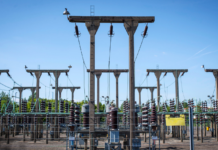The HBL PSL was supposed to start on the 11th of May this year. The tournament normally takes place in the March-April window; it was pushed forward this year to accommodate the ICC Champion’s Trophy being hosted in Pakistan.
But well before the first ball was bowled, or the first tickets were sold, or the floodlights turned on, the franchises were locking horns. It started with Ali Tareen. The owner of the Multan Sultans and the newest member of the owners club decided it was about time some honest truths were spoken.
In the leadup to the tournament, Tareen did the media circuit rounds and did not mince his words — the HBL PSL was no longer competitive within the international franchise tournaments as it had once been. “I am not against the PCB or the HBL PSL. What I am against is mediocrity. HBL PSL needs to take criticism positively and work with franchises to evolve and grow the brand, not pretend everything’s perfect. Growth requires intent. And that’s what I feel is lacking. Stagnation is the enemy,” he said.
Stagnation. Mediocrity.
Those were the two words that set off a chain reaction. Almost immediately, Salman Iqbal jumped to the defence of the league. “Since the start of the HBL PSL, many doubted us. Critics from India and even some local tv channels. But what truly hurts is when one of our own, a team owner, chooses to publicly ridicule and disrespect this league despite its continuous growth. The HBL PSL is more than cricket. It is a Made-in-Pakistan success story. Every stakeholder, including Ali Tareen, benefits from its growth. So let’s protect what we’ve built.”

Others were quick to jump on. Since then, other team owners have made public comments on the issue. Nadeem Omar of the Quetta Gladiators also complained that the HBL PSL was suffering from a lack of hype. “That the tournament needed a dedicated team to promote the tournament, and that the board has started losing interest in the tournament. We need more hype and this is a cash cow for the board, and we pay the money for it. We have lost our edge in recent years but we need to get it back.” Atif Rana of the Lahore Qalandars went back to his older complaints: on how the league needs a revamp of its revenue sharing model.
It was the most public expression of discontent in the HBL PSL that has happened yet between the team owners. While it might not seem so, this is probably the biggest sign that the HBL PSL has been a success beyond what anyone could have expected.
Think about it. This year the HBL PSL was moved from its regular window because Pakistan was hosting the ICC Champion’s Trophy. But could Pakistan have hosted an international tournament without the clout that came from a decade of the HBL PSL? Unlikely. The fact that the team owners are actively debating the future of the tournament and being critical of it shows that they are confident it will survive despite their criticism, or perhaps even thrive because of it.

The tournament is an entrenched part of the cricketing calendar at this point. Over the past ten years, it has been a cash cow for the PCB. Its success has been determined by consistent investment from its sponsors and franchise owners. But next year, the tournament will be up for a major restructuring. The franchise fees are up for renegotiation as well as the title sponsorship. Broadcast rights will also be up for grabs again. It will be a moment where the PCB will be looking to make more while the teams will be looking for something bigger — ownership in perpetuity. On top of this, there are reports of the PCB approaching foreign investors, particularly from Saudi Arabia, to put their money into Pakistan cricket either by buying teams. The question is, with some much up for grabs, what will the HBL PSL look like next year? And could we see a tournament different from the one we have known and loved these past 10 years?
Unlikely beginnings
When the HBL PSL started in 2015, there was little understanding of how the tournament would work. “Back then we were negotiating and Sethi Sb {the then chairman} simply said let’s sign this we will figure it out later. We also felt it was important to get this going and that is why we made a push to just go for it,” says Atif Rana, owner of the Lahore Qalandars, one of the biggest franchises in the league.
It was a decision taken to get something going that was not expected to work. “Forget the future, the bigger thing is how unlikely this was that Pakistan got the HBL PSL up and running. The efforts started at least 2008 when the IPL first started, then suddenly it picked up pace and actually got done,” explains cricket writer Osman Sammiuddin.
According to him, the biggest thing was getting the tournament off the ground. “It is ludicrous to think now, but at the time the HBL PSL had to compete with the Masters League for attention and grounds because it also took place in the UAE. But my theory was always that as long as we have different stakeholders in Pakistan Cricket {the team owners} and this thing got going, it would work for a while.”
This was the idea in everyone’s mind then. Even though it was a risk, everyone wanted to get the tournament started and see what happened. It was a bet that took believing in Pakistan.

“Our outlook towards Pakistan is one of long-term orientation. If we were to draw a tangent line through the ups and downs of the curve of Pakistan’s history, we only see that line going forward and up. When HBL approached HBLPSL 10 years ago, we knew we were going to provide support with a long-term approach; this will succeed, and we will ensure it succeeds because it must,” says Ali Habib, the Chief Marketing and Communications Officer of HBL. Pakistan’s oldest bank has been the title sponsor of the tournament since the beginning, and it has maintained this approach the whole time.
“We’re not here today, gone tomorrow. We’re HBL—you’ve known about us since you were a kid. When people said HBLPSL might not succeed, our institutional view was: why wouldn’t it? We have talent, an established cricket board. All it needed was someone to say, ‘I’m with you—don’t worry, get on with it.’ The rest is history.”
“Now, come February or March, the question isn’t whether HBLPSL will happen in 2026; it’s ‘What’s the launch date?’ It’s now part of Pakistan’s cultural framework. This consistency—10 years at a stretch—is underappreciated. It’s one of Pakistan’s biggest successes in the last 10 years. It molded the thinking of stakeholders and the public. They look forward to it.”
Speaking about those initial days, former Chairman of the PCB Najam Sethi said it was a question of just jumping into the tournament. “Previous regimes had the wrong perspective. They thought that for HBL PSL to be successful, foreign players had to play before domestic audiences in local stadiums. But that wasn’t possible because foreign players were not ready to come to Pakistan. But i reasoned that tv and digital eyeballs mattered not full house in local stadiums. Global Broadcast rights brought in money not gate receipts. So I launched HBL PSL in Dubai and it was a huge financial success, paving the way for it to be gradually branded as a Pakistani product which brought international cricket back to Pakistan,” says Najam Sethi, former chairman of the PCB.

The results have vindicated the tournament. Over time, the value has increased many fold. Take for example the Multan Sultans. In 2015 when the franchise rights were originally sold, the most expensive team was Karachi at a price of $2.6 million per year. In 2017, when the Multan Sultans franchise was introduced, it was sold for $6.35 million. Within a few years, the value of a franchise of the HBL PSL had almost tripled.
How big is the HBL PSL now?
Just how big is the tournament at this point? Profit has access to some of the details for the tournament’s financial position. The HBL PSL is an independent entity that is not exactly owned by the PCB. It is an amalgamation of moving parts (franchises, sponsorship, players) that is owned by different stakeholders together. The tournament itself makes money from gate receipts, broadcasting rights, and sponsorship. This revenue is distributed between the franchises and the board in a set revenue sharing model.
The latest data shows how big some of this is worth. For example, the international media broadcast rights for the HBL PSL is worth Rs 63.2 crore. The rights for broadcasting in Pakistan, meanwhile, were worth Rs 3.15 billion. The live streaming rights for Pakistan were worth Rs 93.17 crore, while the production enhancement rights were worth nearly Rs 20 crores. This gives media rights worth almost Rs 5 billion alone. The cost of this production was around Rs 1.3 billion, and the final profit from just broadcasting was Rs 3.6 billion.
Similarly, the title sponsorship for the tournament, which is paid for by HBL, was worth $ 22.5 million until the year 2025, which will be up for renegotiations next year. Overall, for just one year, there were also seven ‘category’ sponsors for the tournament that contributed close to Rs 1.14 billion to the tournament. Sponsorship on the shirts of the umpires was worth Rs 18 crores and venue activation rights were just over Rs 11 crores. The rights for sponsorship to the strategic timeout (a break of a few minutes in the game) was Rs 6.3 crores. Truck branding was Rs 5.4 crores, and virtual branding rights were Rs 7.2 crores. The branding partnership for the HBL PSL was over Rs 16 crores, and gate receipts (ticket sales) actually contributed an impressive Rs 47.5 crores.

Overall, the revenue from this (gate receipts and sponsorship) for the year rounded out to about Rs 3.1 billion. On top of this, the tournament has become an entrenched brand that is not going anywhere.
“The HBL PSL is more than cricket. It’s an important component of Brand Pakistan. Brand. It signals Pakistan is open for business. In 2016, the tournament was held in Dubai because no one would come here. Now, we just hosted the ICC Champions Trophy in Pakistan. If we had been watching the first match of the HBLPSL in Dubai in 2016 and I told you we would be hosting in 2025 the ICC Champion’s Trophy in Pakistan with all cricket-playing countries participating, you would have given me a funny look. But that is what HBLPSL has achieved; it has been a catalyst of bringing back international cricket/investment back to Pakistan. That is nation-building,” says Ali Habib.
Splitting the pie
The revenue sharing model of the HBL PSL is a topic this publication has addressed at length before. Without getting into too many details, let us sum up how this works. All of the revenue we have mentioned above is put into what is called the Central Revenue Pool. This is the entire earning of the HBL PSL. According to the initial agreement, this revenue pool was split between the franchises and the PCB. Under this, the PCB would get 20% of the pool and the rest of the 80% would be split between the franchises.
This was a bit of a problem. Take the example of the first ever HBL PSL. When the central revenue pool was calculated, it turned out that the PSL had turned a profit of $2.6 million. Out of this, the PCB pocketed $0.6 million while the rest of the $2 million were divided equally among the five sides – leaving each side with a mere $0.4 million. The sides all ended up making a significant loss in the first year. And how could they expect not to? In the first edition of the PSL only, the Karachi Kings for example had paid $2.6 million as their franchise fee. This was the same amount as the entirety of the PSL made. Not only did the Karachi Kings only recover $0.6 million of their initial investment for the first year, they also had to spend more on top of that.

Without getting into all of the details, over time the franchises renegotiated this and got to a point where the central revenue pool is now split 95% between the teams equally (although one other team has been added since so it is split six ways instead of five) and they also make money through individual sponsorships.
Over the years, the tournament has clearly become a cash cow, especially for the board, and as such it is here to stay. “The HBL PSL is not just owned by the PCB. Since there are six different franchise owners, it has created an ecosystem that makes money. Even though the PCB tries to cannibalise it at some times, everybody realises this is something that brings the money in and that has been a prime reason it has run through. The worry for me now is the increasing politicisation of the board might filter through into the franchises and the league. That is the simple reason it has actually worked. And the fans clearly love it,” says Osman Samiuddin.
It has obviously been very beneficial to the cricket board. The HBL PSL has proven highly profitable for the PCB over the years. In 2018, despite the tournament itself making a Rs 30 crore loss (with Rs 1.3 billion in revenue and Rs 1.6 billion in costs), the PCB still earned Rs 2.2 billion from it—43% of its total Rs 5.13 billion revenue—due to Rs 1.55 billion in franchise fees and Rs 56 crores from the central revenue pool. The PCB made a loss of Rs 53 lakhs overall that year.
In 2019, PCB posted a Rs 5.34 billion profit on Rs 11.3 billion revenue. PSL revenues grew to Rs 3.31 billion, with Rs 2.78 billion in the central pool. PCB took over Rs 1 billion from this, while Rs 2.12 billion came from franchise fees.

In 2020, PCB earned Rs 3.62 billion from the PSL (38% of its Rs 9.34 billion total revenue), posting a Rs 4.31 billion profit. Of the PSL revenue, Rs 2.43 billion came from franchise payments and around Rs 1.1 billion from the central pool. Due to Covid-19, the central pool dropped to Rs 2.57 billion from Rs 2.78 billion the previous year.
PCB’s general fund rose from Rs 9 billion in 2018 to Rs 13 billion in 2019, Rs 17 billion in 2020, and over Rs 20 billion by end of 2023. This helped PCB survive 2021, when it posted a Rs 75.6 crore loss on Rs 7.9 billion revenue after giving temporary relief to franchises.
Initially, franchise fees were set in dollars—$8.3 million/year across five teams from 2015—which became a problem as the rupee devalued (from Rs 105 to Rs 175/USD by 2021). Franchise payments rose from Rs 88 crore to Rs 1.4 billion/year. A sixth team, Multan, added $6.35 million annually. With the PCB taking over 20% of the central pool and franchise costs rising, teams suffered losses.
In 2021, after pushback, PCB reduced its share of the central pool to 5% and fixed the dollar rate at Rs 175. Teams like Multan, Karachi, and Lahore led this renegotiation. By then, smaller teams like Peshawar and Quetta were benefitting more due to lower franchise fees.
In 2022, PCB revenue was Rs 9.03 billion, with Rs 3.34 billion (38%) from the PSL—the first year PSL revenue dropped for the PCB. The central pool grew to Rs 5.4 billion, but under a new 90-10 split, PCB received only Rs 57 crore, down from Rs 1.2 billion in 2021. Franchise fees remained Rs 2.67 billion.

In 2023, PCB saw its highest revenue ever at Rs 12.45 billion and a profit of nearly Rs 4 billion. The PSL contributed Rs 3.55 billion. While its share of overall revenue declined due to rising international earnings (Rs 5.43 billion from ICC/ACC), PSL remained a major revenue driver.
What comes next?
So what happens now? Next year, the franchises will have their franchise fee up for renegotiation. Think of it this way. Over the past ten years, most of the teams have struggled to make money off this tournament.
“From what I’ve gathered from speaking to them, I think most of them are making money, some of them consistently. There is probably only one franchise, Multan, that is not making money. Even among the most disgruntled franchise owners this is something they want to keep investing in. They need to be owners in perpetuity that will be a main area of conversation over this topic when the rebidding happens. I think the majority of them are keen to bring the financials next year. It seems it will be a minimum of 25% and there will be some bumps along the way. Intent wise most of them want to continue,” says Osman Samiuddin.
This intent to continue goes beyond just the franchise as well. Sponsors have also felt the same way. Some (with retail oriented products like tea brands) tell us they see an increase in sales during HBL PSL season, but also see improved brand recognition. Other sponsors look beyond just the obvious. “Return on investment isn’t just about rupees. Thinking of HBLPSL in terms of how many accounts were opened in our branches or how many credit cards were sold would be purely transactional; HBL is not transactional. For HBL—a brand well known even before HBLPSL—it’s about community engagement, contributing to Pakistan’s image, and providing youth a healthy pursuit,” says Ali Habib.
The research tells us that HBL now enjoys the strongest brand equity in Pakistan. HBLPSL has made sure that HBL stays current and relevant to Pakistanis, the largest segment of whom are below the age of 30; our youth. The Bank understands that this segment is tech-savvy and hence, it is employing unique ways to take HBLPSL to them via Social Media platforms. HBLPSL itself is now assuming an iconic status as a brand. “
“Our commitment to the HBLPSL’s success hasn’t changed over the last 10 years, but commercial terms must be evaluated on merit. What we paid in Year 1 versus now is a world of difference. We’ll go to the drawing board when the time comes, as we always do, but our belief in the product remains. If the HBLPSL expands to more teams and attracts more investment, it’ll prove our bet right; Pakistan is open for business – and HBLPSL is a cornerstone of that narrative”

This is what the current scenario comes down to. The HBL PSL over the past decade has been a miracle. It has allowed cricket to return to Pakistan, it has been profitable, and it has become a part of Pakistan’s cricketing culture — one we cannot imagine going away any time soon. Now that the franchise fee for the next decade are up for renegotiation, there is no doubt that this tournament will continue for another decade barring what would have to be seismic events.
The one thing that the team owners will want more than anything else is the rights to these teams in perpetuity. Currently, they are in a 10+10 model, whereby they had the rights at a locked rate for the first 10 years and will now have the rights for another 10 years with a renegotiation of price. Sort of like a rental unit agreement. What the teams are looking for is a system in which they have perpetuity in ownership. Where they pay a yearly entrance fee instead of a franchise fee and they own the rights to the team.
Think about it. Any of the teams have spent the past 10 years marketing, promoting, and building a brand around their franchises. If they walk away from these franchises at any point, they should be able to sell the team while accounting for the money they have put into it. Otherwise it is like renovating a house you do not own and rent instead.
The new challengers
As the HBL PSL enters its second decade, expansion is not just a possibility — it is increasingly looking like an inevitability. The Pakistan Cricket Board (PCB) has made no secret of its ambitions to bring in two new franchises to the tournament, which would take the total team count from six to eight. For the board, this is an attractive proposition. Each new team represents millions of dollars in additional franchise fees and the promise of a broader national footprint for the tournament. For the existing franchises, however, the news has been met with some apprehension.
At the heart of the matter lies the central revenue pool. As it stands, the revenue generated from broadcasting rights, sponsorships, and gate receipts is split — 95% going to the franchises, and 5% to the PCB. This 95% is divided equally among the six teams. Adding two new teams means dividing the same pie into more slices. Unless the total revenue of the tournament grows significantly — and fast — each franchise will end up receiving a smaller portion of the profits, even as their costs remain the same or grow. It’s not just a question of fairness, it’s one of financial viability.
And yet, the PCB sees opportunity. A larger league means more matches, more media rights to sell, and potentially, more sponsors. The league has already shown it can command impressive numbers: Rs 5 billion in media rights, Rs 3.1 billion from sponsorships and gate receipts, and over Rs 3.5 billion in total revenues for the PCB in 2023 alone. With the right kind of international backing, those numbers could rise even further — and the PCB knows exactly where to look.
Profit can confirm that the PCB has held discussions with Saudi Arabian energy giant Aramco. Talks are still in early stages, but the scope has reportedly been wide-ranging: from becoming a major sponsor of the HBL PSL, to potentially acquiring ownership of one of the new teams. If a deal materializes, it would represent the first major foray of a Gulf entity into franchise cricket in Pakistan, and possibly mark the beginning of a more global commercial outlook for the league.
For the PCB, bringing in sponsors like Aramco would mean deeper pockets and more international credibility. For a league that was once launched in the UAE because Pakistan was too unstable to host international cricket, it would be a full-circle moment — one where foreign investment would now be vying to enter a thriving domestic product.
However, this might not be so easy. “The value of Pakistan Cricket has fallen dramatically in recent times. Domestic broadcast rights have fallen and the broadcasters outfoxed the PCB. If the broadcasters get together and collude effectively, it is a tough time finding a new sponsor, especially foreign ones. I am not sure how much money there is in the market” says Osman Samiuddin.
Then there is another factor. The sponsors and team owners that have been part of this tournament since the beginning have persisted because this is a product they believe in. “As title sponsors, we didn’t just write cheques. We bet on Pakistan’s potential when others hesitated. Now, every time a foreign player praises HBLPSL’s energy or a fan wears a team jersey abroad, it validates that bet. HBL’s name is woven into that story—not as a passive sponsor, but as a catalyst. That’s the ROI you can’t quantify on a balance sheet” says HBL’s Ali Habib.
For the franchises, the expansion and foreign involvement also raises the stakes. It sharpens the demand for perpetuity of ownership. If new teams are entering with potentially better deals or more backing, existing franchises want to ensure they’re not left behind after spending a decade building their brands, audiences, and infrastructure.
It’s a delicate balancing act. Growth versus sustainability. Investment versus dilution. The new challengers may help usher in a new era for the HBL PSL — one that is more global, more valuable, and more high-stakes than ever before. But whether that future is equitable for all stakeholders remains to be seen.
























